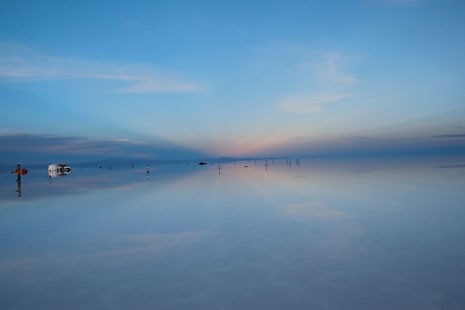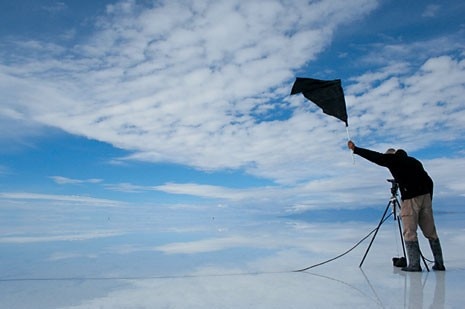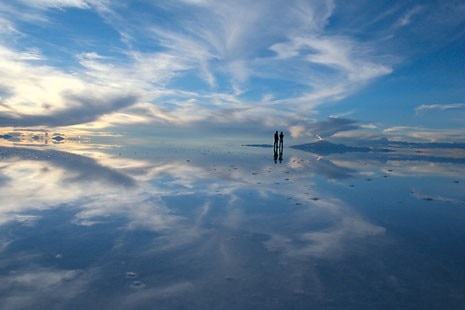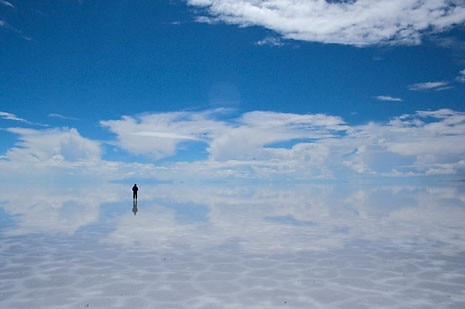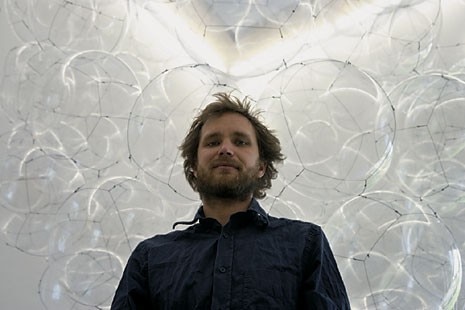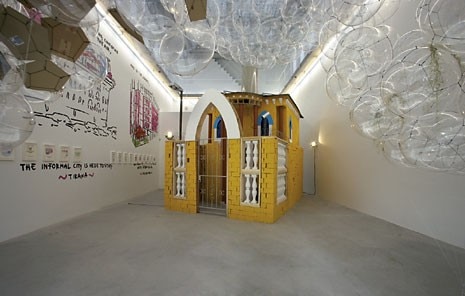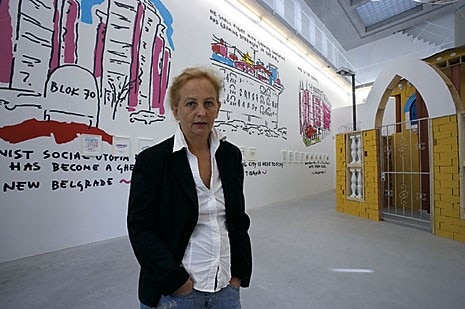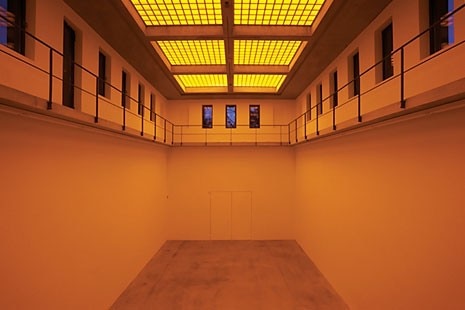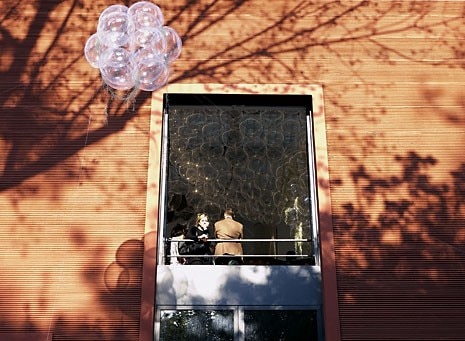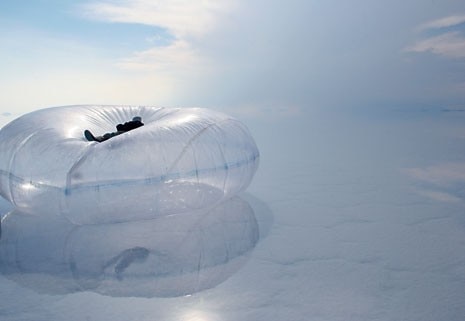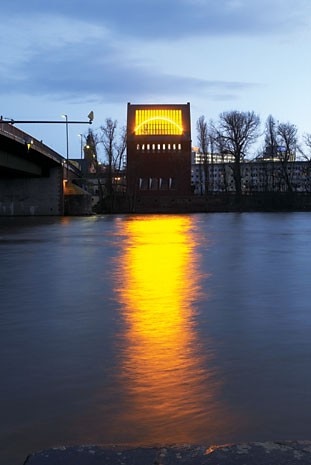Floating utopias
A sun is rising behind a large glass surface among the trees, the bright light is reflected in the water. Huge balloons hover in the air, some transparent, others lit from within. Hundreds of people gather on the small green island at night. What kind of strange place is this? Imagine a small island in a river running through a large European city. An old bridge – very old in fact – crosses the river and gets its stability from a support on the island. Hidden inside the edifice are rooms occupied by a rowing club. Now an architect has been given the task to renovate the bridge and design it in a way that gives due attention to the historical importance of the location. The medieval bridge, which originally had two towers (the oldest rendering dates from the year 1405), will again be equipped with two high buildings standing among the trees on the narrow island. The towers are not supposed to be pure decoration: one of the edifices is supposed to serve as a venue for contemporary art. The year is 2006. Is this just an odd fantasy?
No, this is the new Portikus. What you see here is in fact one of the bridge towers, designed by Frankfurt architect Christoph Mäckler who is responsible for the renovation of the city’s Alte Brücke, one of Europe’s oldest and most important bridges. This building is now home to the Portikus, the exhibition space of Frankfurt’s Städelschule Art Academy, one of Europe’s most experimental art colleges founded by Kasper König in 1988. An odd location for a kunsthalle? Indeed: in the basement, the Ruderverein (the oldest rowing club in the city) has installed its elegant wooden boats. There is enough space for some sixty vessels. The Portikus has always been a kind of parasite.
First it was hidden behind the neoclassical facade of Frankfurt’s old city library that was bombed during World War II. After leaving this original address in 2003, the institution moved to an architectural structure designed by artist Tobias Rehberger in a historical building in central Frankfurt. Now the time has come for the third phase: on May 6, Slovenian artist Marjetica Potrc and Argentinian artist Tomas Saraceno inaugurated the new venue with the show “Personal State/Infinite Actives”, the 140th exhibition in the history of the institution. The first work from Olafur Eliasson’s Light Lab series has been installed in the glass roof and is visible at night from across the city. Over the next two years, further light works will continuously change the appearance of the building at night. This is a solar lab, the series of works will all relate to the notion of heliotropism.
Potrc and Saraceno both work close to architecture and investigate the possibilities of alternative living strategies to be realised individually or collectively. Potrc presents drawings, wall paintings and architectural sculptures that function as case studies for improvised and self-initiated buildings that one finds all over the world. Her work explores urban space as a living and ever-changing organism that adapts to the needs and demands of transitory communities. She normally focuses on the predicament of large contemporary cities and for the Portikus she developed a new work that draws a link between Frankfurt and Prishtina. Her Prishtina-House brings together both personal and modernist styles and shows the creation of a new architectural typology; it is an example of what the artist calls “personal orientalism”. Saraceno, on the other hand, is more interested in possibilities of living in the skies. He explores the possibilities of air-borne housing as a conceivable solution to the problems of population growth and rapidly changing climates (see Domus 883, July/August 2005).
Flying Garden is part of a long-term project entitled Air-Port-City. His point of departure is the development of inhabitable platforms that float in mid-air like clouds and join together in various formations. Saraceno’s works, which relate to projects such as Buckminster Fuller’s Geodesic Domes and Peter Cook’s visionary city project Walking City, initially come across as rather utopian but are meant as realistic projects of collective planning and cooperation. The inside of the Portikus is a large white space. Remember Brian O’Doherty’s classical description of the white cube gallery: “A gallery is constructed along laws as rigorous as those for building a medieval church. The outside world must not come in, so windows are usually sealed off. Walls are painted white. The ceiling becomes the only source of light.” The traditional understanding of the ideology of the white cube has been summed up like this: “In classical modernist galleries, as in churches, one does not speak in a normal voice; one does not laugh, eat, drink, lie down or sleep; one does not get ill, go mad, sing, dance or make love”. In short: the white cube is a structure of exclusion which produces an absolute interiority. Portikus is an institution that stresses experimentation and expansion. The unusual site and the generous exhibition space will most likely trigger unexpected projects by the invited artists. Already Saraceno’s project has made clear that there is no obvious border between inside and outside. During the first year on the island, the Portikus will realise projects by, among others Dan Perjovschi , Francis Alÿs, Paul Chan, John Baldessari and Paulina Olowska. Will they arrive on the island on boats, through the trees, in balloons or, more traditionally, on bicycles riding across the bridge? Will they ever leave the island?
